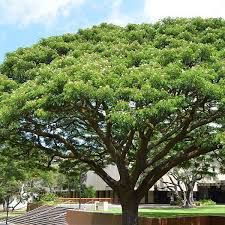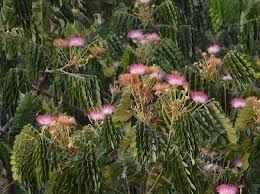Gallery
Rain Tree

Leaves of Rain Tree

Flower of Rain Tree

The Rain Tree, known for its wide-spreading canopy and striking pink flowers, is one of the most iconic tropical trees found across the globe. Originally from Central and South America, it has now become a familiar sight in tropical regions due to its beauty, shade, and ecological benefits. Revered for its environmental, cultural, and medicinal value, the Rain Tree is truly a wonder of the plant world.
The Rain Tree (Samanea saman) is a majestic, wide-canopied tree that can grow up to 25 meters tall. It is particularly admired for its umbrella-shaped crown and beautiful pink, powder puff-like flowers. Depending on the environment, the tree can be deciduous in dry areas and evergreen in moist regions. Its broad, leafy canopy provides extensive shade, making it a popular choice for parks, gardens, and along roadsides.
The Rain Tree contains several beneficial compounds such as tannins, saponins, and alkaloids. These contribute to its traditional medicinal uses. Extracts from its leaves and bark demonstrate antioxidant, antimicrobial, and anti-inflammatory properties, making it valuable in herbal medicine.
Initially classified under the genus Albizia, the Rain Tree was later reassigned to the genus Samanea. Its most widely accepted scientific name today is Samanea saman, although it is sometimes still referred to as Albizia saman in older literature.
Native to tropical America, the Rain Tree has been widely introduced across the tropics, including Southeast Asia, Africa, the Indian subcontinent, and the Pacific Islands. It adapts well to both dry and moist tropical climates and prefers well-drained loamy soils, although it is tolerant of a variety of soil types.
Rain Trees are typically propagated through seeds or cuttings. They are fast growers and drought-resistant, making them a resilient choice for tropical landscaping. Additionally, the tree’s nitrogen-fixing roots enrich the soil, enhancing fertility — an essential feature for agroforestry and sustainable agriculture.
Rain Trees are generally safe for humans and animals. Their pods, while edible for livestock, should be consumed in moderation due to possible laxative effects if eaten in large quantities.
In many cultures, the Rain Tree symbolizes peace, tranquility, and relaxation. Its majestic, wide canopy is often associated with gathering places such as schoolyards, temples, and community gardens, reflecting its deep-rooted cultural importance.


